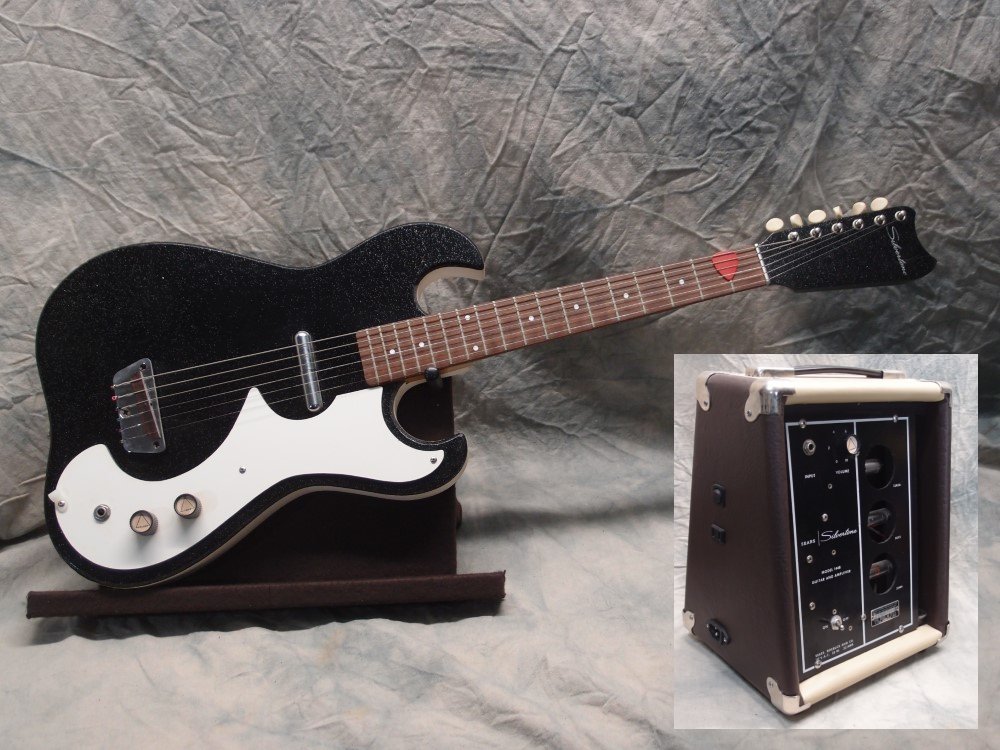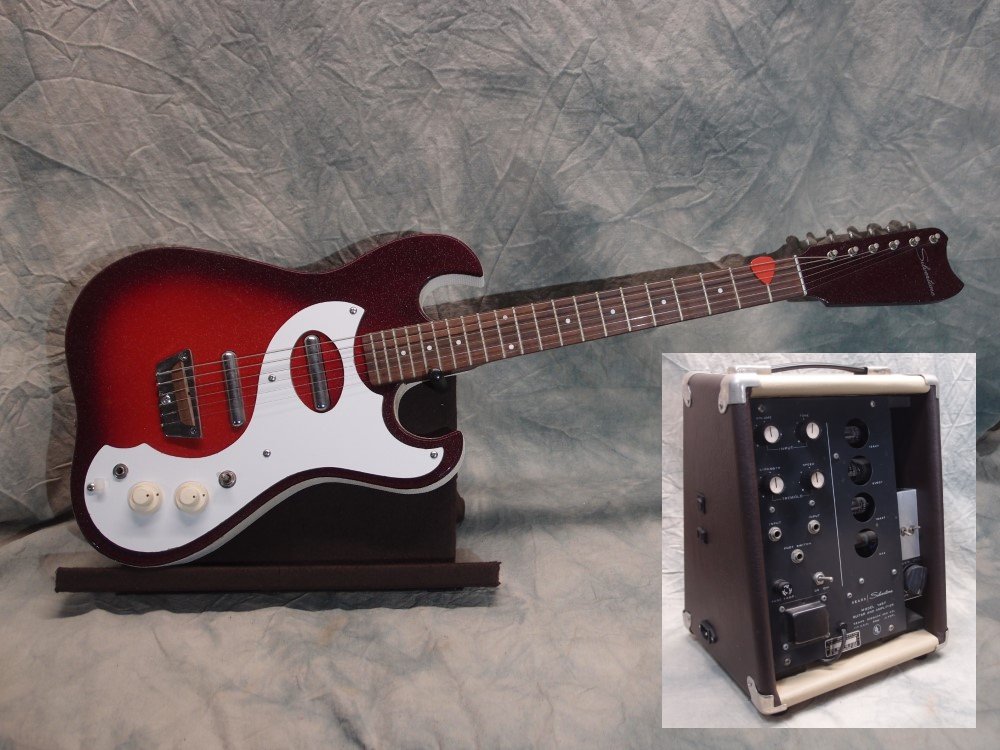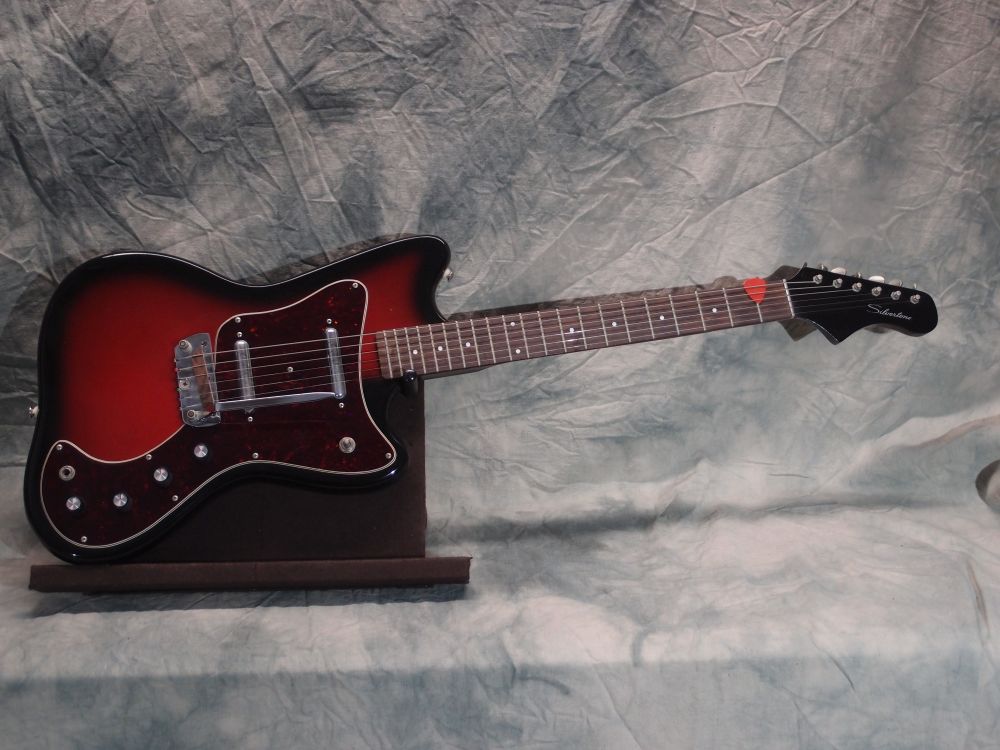Silvertone 1478 Guitar




This is a Harmony-made Sears Silvertone 1478. This body style was originally called the "Silhouette", and Harmony sold similar models under their own name. Later it became known as the "Bobkat". I can't find a serial number anywhere, and I'm not taking it apart to look for one, so I don't know the exact age of this guitar.

If you look very closely at this picture, you can see the only thing wrong with this guitar - a small triangle of wood that broke off the body at the base of the neck. I suppose I could repair that and blend it in - black nitro is pretty easy to work with. But I didn't bother, it doesn't affect anything. I just touched up some of the dings around the edges and then gently buffed the whole thing to a nice shine. I don't believe in "Mojo". That broken-off bit is exactly where every old Strat has a crack in the finish, it's just a bad spot.
You can see two really important things on this guitar: it has both original DeArmond pickups, one with some play wear, and it has a full set of original knobs. Those miniature Harmony knobs, and the miniature Harmony pots underneath them, are impossible to get. You rarely see even one for sale, nevermind a matched set, and the price is always astronomical. The pickguard also is in perfect condition. The pickups are riveted to the pickguard, which would complicate any kind of work if it needed it. Other than that, the intonation was off, so I moved the bridge. That floating bridge does tend to wander around a bit. The wear on that pickup is actually a lot less apparent in person.
The tuners are standard cheap open-back strip tuners. The tremolo is a contraption that somehow actually works reasonably well. Unlike the Danelectro Silvertones, this Harmony has a conventional adjustable truss rod. On a guitar this old, I see that as a bad thing. I'd rather have no adjustment and never need it than have to tweak a 60-year-old truss rod, and hope that nothing breaks in the process. Fortunately, the neck on this one is perfect, I never had to touch it.
One thing about these old Harmony guitars is that the neck has almost no taper. The heel is pretty narrow and the nut is pretty wide, so it's almost the same width the whole length. The string spacing is not bad though, and it plays alright, unlike a Rickenbacker, which is not made for human hands. You just need to keep everything in-line and centered, and the floating bridge doesn't help in that regard.



This is the last appearance of the 1478, and also the last appearance of any Danelectro product - you can see a 1482 amp at the back. $89.95 translates to $806.00 in 2022 dollars !!! A case was $13.95; for $109.95 you could still get a two-pickup Danelectro-made 1452 Amp-in-Case. The Harmony doesn't seem like such a bargain, or even a big step up, does it? The tremolo works better than the Danelectro. By 1969 Sears had replaced all the solid-bodies with Japanese weirdness, and I lose interest.

At $499 at Guitar Center, this guitar is both better and cheaper than the original! Too bad it doesn't have the original Harmony tremolo and foil pickups, but the bridge is a huge improvement, and they even got the knobs right. I'll bet they don't sell many of these. If it said Gibson on it, idiots would be lining up to pay $3000 for them.
































